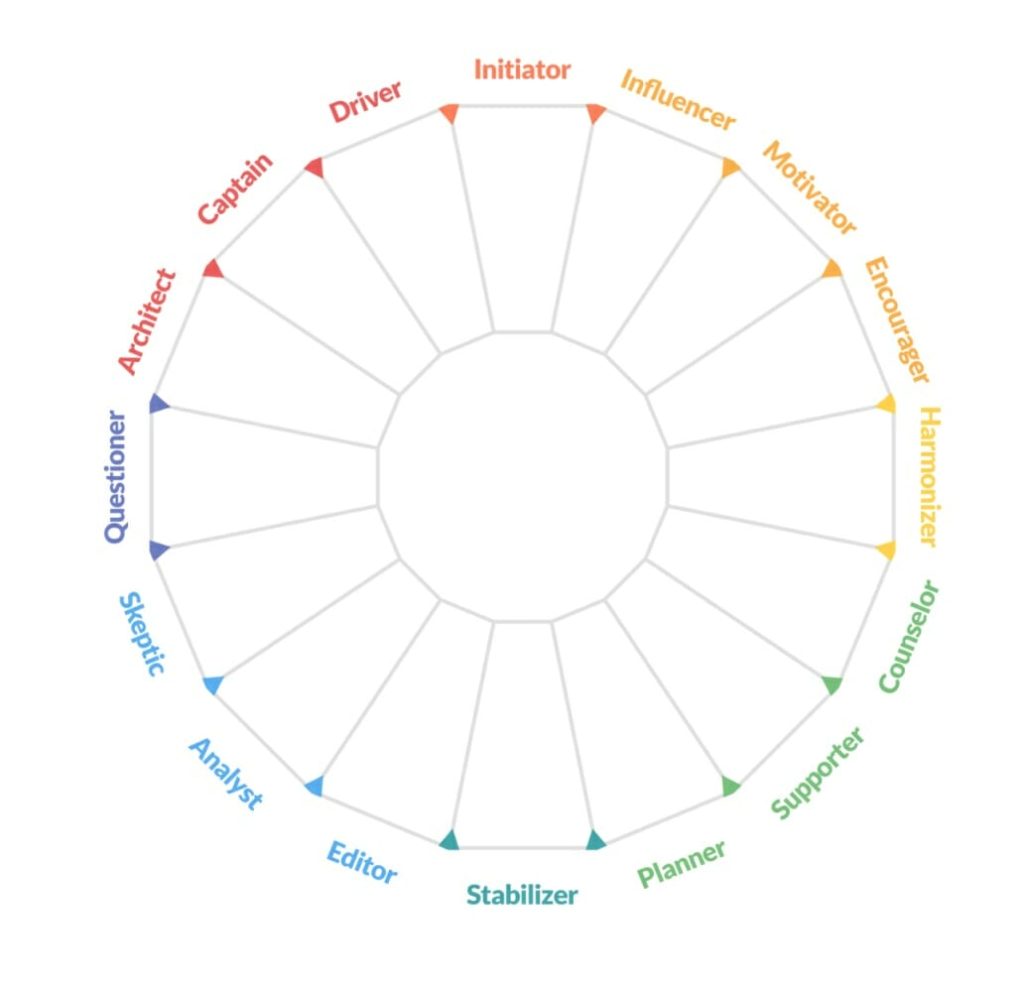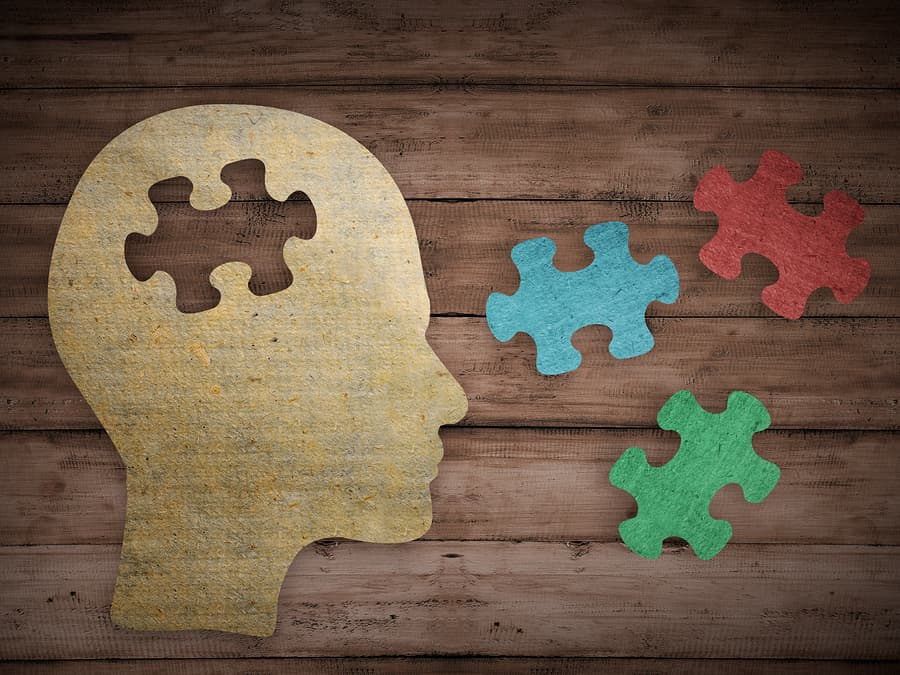Note: Artificial intelligence is helping HR professionals predict an individual’s personality, work habits and communication style more easily and accurately than ever before. Those insights can assist in deciding which job candidates to interview or improving the effectiveness of existing teams. In this excerpt from Predicting Personality: Using AI to Understand People and Win More Business, the authors explain how personality analysis can help you better understand the dynamics of your team. The excerpt refers to the “personality map” pictured here, which is made up of 16 unique personality types.
∼∼∼∼∼
Company culture has become an overused buzzword for a reason — it really makes a difference. When teams gel, they can produce much more than the sum of each person’s individual contribution. Good chemistry allows a group to punch above its weight class.
When you’re in the powerful position to start a team from scratch, or add to an existing team, it can be daunting. You may go through five or six rounds of interviews, and still feel like you’re gambling with the future.
And statistically, you usually are. The average U.S.-based company turned over 44.3% of its workforce in 2018. Firms in especially low-retention industries like entertainment and hospitality replace more than 75% of their employees annually, while a “high-retention” industry like technology hovers around 35%. In a 2018 study, Deloitte found that 43% of millennials expect to leave their job within two years and over 70% expect to leave within five years.
The good news is, you probably have a lot of opportunity to increase productivity and reduce turnover-related costs. The bad news? As evidenced by a multitude of reports about our increasingly job-hopping culture, long-lasting and productive teams are exceptionally rare (and getting rarer). But with Personality AI, you can face this challenge with a full arsenal of data and give your team the unfair advantage of built-in empathy.
Choosing the right team
 Just like there are no “good” or “bad” relational matches on the Personality Map, there are no good or bad group combinations. Every group has a unique dynamic, each with its own benefits and risks.
Just like there are no “good” or “bad” relational matches on the Personality Map, there are no good or bad group combinations. Every group has a unique dynamic, each with its own benefits and risks.
The key is to understand what the benefits and risks are by analyzing the personalities within the group, then making sure they are aligned with your overall goals. Let’s go through some examples.
The Pressure-Cooker
If you’re in a cutthroat industry, where competition is fierce and the winner takes all, you may need to stack your team in a more aggressive, dominant direction.
It may be necessary to set up a more competitive environment where people can demand excellence and openly challenge each other to improve. To accomplish that, you would want to bring in more Architects, Captains, Drivers, and Initiators, who sit toward the top left of the Personality Map.
While you will likely incur the benefits of a highly driven group that can move fast to achieve results, you may also open yourself up to risks like:
- Frequent verbal conflict.
- Struggles over control.
- Aggressive, workaholic-like behavior.
This type of group dynamic typically works best when the team is more of a collection of individual contributors who do not necessarily need to collaborate or cooperate with each other very often.
The Sandbox
Some industries and companies require a more creative, flexible approach to work. In these cases, it may be best to add more Influencers, Motivators, Encouragers and Harmonizers from the top right of the Personality Map.
These teams will tend to be welcoming to new people and ideas. They may be very collaborative, open, and emotionally driven.
These groups can be extremely innovative, and they may create inspiring, revolutionary products. At the same time, they may:
- Chase “shiny objects” instead of focusing on one thing and following through to completion.
- Decide to make changes quickly, without doing enough research.
- Operate with a very loose sense of rules and expectations, so goals may be unclear and processes can become disorganized.
In situations where diligence, caution, and precision are required, this type of group may struggle. However, when you can afford to take big, bold risks and explore uncharted territory without being too efficient, it can be ideal.
The Sanctuary
In mature companies that have built a steady operation that needs to be carefully maintained, it may be beneficial to fill the team with Counselors, Supporters, Planners, and Stabilizers.
These teams tend to prioritize stability, reliability, and careful planning. They often value collaboration and avoiding conflict or “rocking the boat.”
In an S-heavy team, the organization is unlikely to rush into decisions or react impulsively to market conditions. At the same time, they may:
- Make decisions too slowly, missing the bigger picture.
- Be hesitant to remove poor performing team members.
- Miss out on innovation because of a focus on maintaining the status quo.
This type of group is best suited for an organization and market that is well-established and is playing defense to protect well-built competitive advantages, rather than frequently creating new products.
The Laboratory
If you want to create a hyper-meticulous, highly pragmatic environment where people encourage each other to triple-check all of their work and avoid mistakes, you will want more C-types in the room, such as Questioners, Skeptics, Analysts, and Editors.
A C-focused team places a high value on accuracy and quality, likely creating stable, dependable products that get the job done right. For example, if you are building a bridge that needs to hold up thousands of cars and pedestrians each day without collapsing, you’ll want plenty of C personalities present.
While a group with many C personalities can be relied upon to solve complex problems, they may run into issues when they:
- Restrict innovation and creativity in order to reduce risk.
- Spend too much time analyzing options and delay decision-making.
- Focus too much on efficiency and ignore the emotions of others.
A team of C personalities can be well-suited to figure out difficult challenges and account for the many details that others might miss.
The Melting Pot
Sometimes, you need a team that can straddle the line between risk and reward, boldness and caution.
Whether it’s the board of a public company, a congressional caucus, or a trivia team, you will want to make sure to include an even distribution of personality archetypes, without skewing too far in any direction on the Personality Map.
Rather than finding people who are as close to each other on the Personality Map as possible, you want to find people who balance each other out. If you have a strong Captain (D), you need a strong Supporter (S). If you have an extreme Initiator (DI), you need an extreme Stabilizer (SC). These archetypes have complementary traits, which can ultimately lead to better, wiser decisions.
However, balance is not a cure for all of your group collaboration challenges. It has risks, just like any other team, including:
- Internal miscommunication, with so many different styles at play.
- Conflicting motivations between group members.
- Impulse for the strong D-types to take a controlling position.
In balanced teams, leaders need to be vocal and specific about cultural norms and expectations. Sometimes, the group will need to adopt S-like caution, while at other times more aggressive D-like behavior may be necessary.
Crystal, pioneering in Personality AI, offers these insights simply by analyzing someone’s LinkedIn profile or resume, or having them take an online test.
